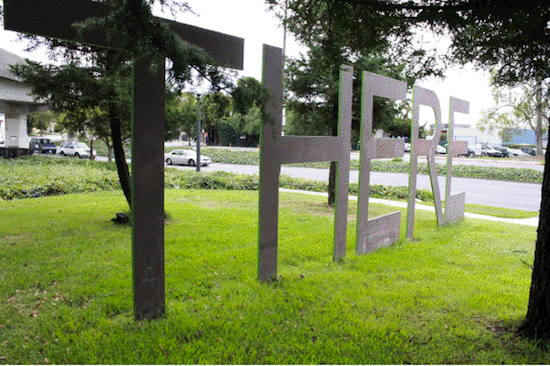The AP has published this descriptive story about the Iranian market for kidneys:
IN IRAN, UNIQUE SYSTEM ALLOWS PAYMENTS FOR KIDNEY DONORS BY NASSER KARIMI AND JON GAMBRELL
Some paragraphs from the story:
"The AP gained rare access to Iran's program, visiting patients on dialysis waiting for an organ, speaking to a man preparing to sell one of his kidneys and watching surgeons in Tehran perform a transplant. All of those interviewed stressed the altruistic nature of the program - even as graffiti scrawled on walls and trees near hospitals in Iran's capital advertised people offering to sell a kidney for cash.
...
Iran started kidney transplants in 1967 but surgeries slowed after the 1979 Islamic Revolution and the storming of the U.S. Embassy in Tehran, in part due to sanctions. Iran allowed patients to travel abroad through much of the 1980s for transplants - including to America. But high costs, an ever-growing waiting list of patients and Iran's grinding eight-year war with Iraq forced the country to abandon the travel-abroad program.
In 1988, Iran created the program it has today. A person needing a kidney is referred to the Dialysis and Transplant Patients Association, which matches those needing a kidney with a potential healthy adult donor. The government pays for the surgeries, while the donor gets health coverage for at least a year and reduced rates on health insurance for years after that from government hospitals.
Those who broker the connection receive no payment. They help negotiate whatever financial compensation the donor receives, usually the equivalent of $4,500. They also help determine when Iranian charities or wealthy individuals cover the costs for those who cannot afford to pay for a kidney.
Today, more than 1,480 people receive a kidney transplant from a living donor in Iran each year, about 55 percent of the total of 2,700 transplants annually, according to government figures. Some 25,000 people undergo dialysis each year, but most don't seek transplants because they suffer other major health problems or are too old.
Some 8 to 10 percent of those who do apply are rejected due to poor health and other concerns. The average survival rate of those receiving a new kidney is between seven to 10 years, though some live longer, according to Iranian reports.
In the United States, about a third of kidney donations come from living donors. The average kidney from a deceased donor lasts 10 years, while one from a living donor averages about 15 years, according to Dr. David Klassen of the United Network for Organ Sharing, or UNOS, which oversees the U.S. transplant system. Recipients of living-donor kidneys in the U.S. fare better in part because they haven't been on dialysis as long before their transplant."
IN IRAN, UNIQUE SYSTEM ALLOWS PAYMENTS FOR KIDNEY DONORS BY NASSER KARIMI AND JON GAMBRELL
Some paragraphs from the story:
"The AP gained rare access to Iran's program, visiting patients on dialysis waiting for an organ, speaking to a man preparing to sell one of his kidneys and watching surgeons in Tehran perform a transplant. All of those interviewed stressed the altruistic nature of the program - even as graffiti scrawled on walls and trees near hospitals in Iran's capital advertised people offering to sell a kidney for cash.
...
Iran started kidney transplants in 1967 but surgeries slowed after the 1979 Islamic Revolution and the storming of the U.S. Embassy in Tehran, in part due to sanctions. Iran allowed patients to travel abroad through much of the 1980s for transplants - including to America. But high costs, an ever-growing waiting list of patients and Iran's grinding eight-year war with Iraq forced the country to abandon the travel-abroad program.
In 1988, Iran created the program it has today. A person needing a kidney is referred to the Dialysis and Transplant Patients Association, which matches those needing a kidney with a potential healthy adult donor. The government pays for the surgeries, while the donor gets health coverage for at least a year and reduced rates on health insurance for years after that from government hospitals.
Those who broker the connection receive no payment. They help negotiate whatever financial compensation the donor receives, usually the equivalent of $4,500. They also help determine when Iranian charities or wealthy individuals cover the costs for those who cannot afford to pay for a kidney.
Today, more than 1,480 people receive a kidney transplant from a living donor in Iran each year, about 55 percent of the total of 2,700 transplants annually, according to government figures. Some 25,000 people undergo dialysis each year, but most don't seek transplants because they suffer other major health problems or are too old.
Some 8 to 10 percent of those who do apply are rejected due to poor health and other concerns. The average survival rate of those receiving a new kidney is between seven to 10 years, though some live longer, according to Iranian reports.
In the United States, about a third of kidney donations come from living donors. The average kidney from a deceased donor lasts 10 years, while one from a living donor averages about 15 years, according to Dr. David Klassen of the United Network for Organ Sharing, or UNOS, which oversees the U.S. transplant system. Recipients of living-donor kidneys in the U.S. fare better in part because they haven't been on dialysis as long before their transplant."

 Article Info
Article Info







